Easy Ways to Add Math to Everyday Routines: A Home-School Connection Post
August 6, 2015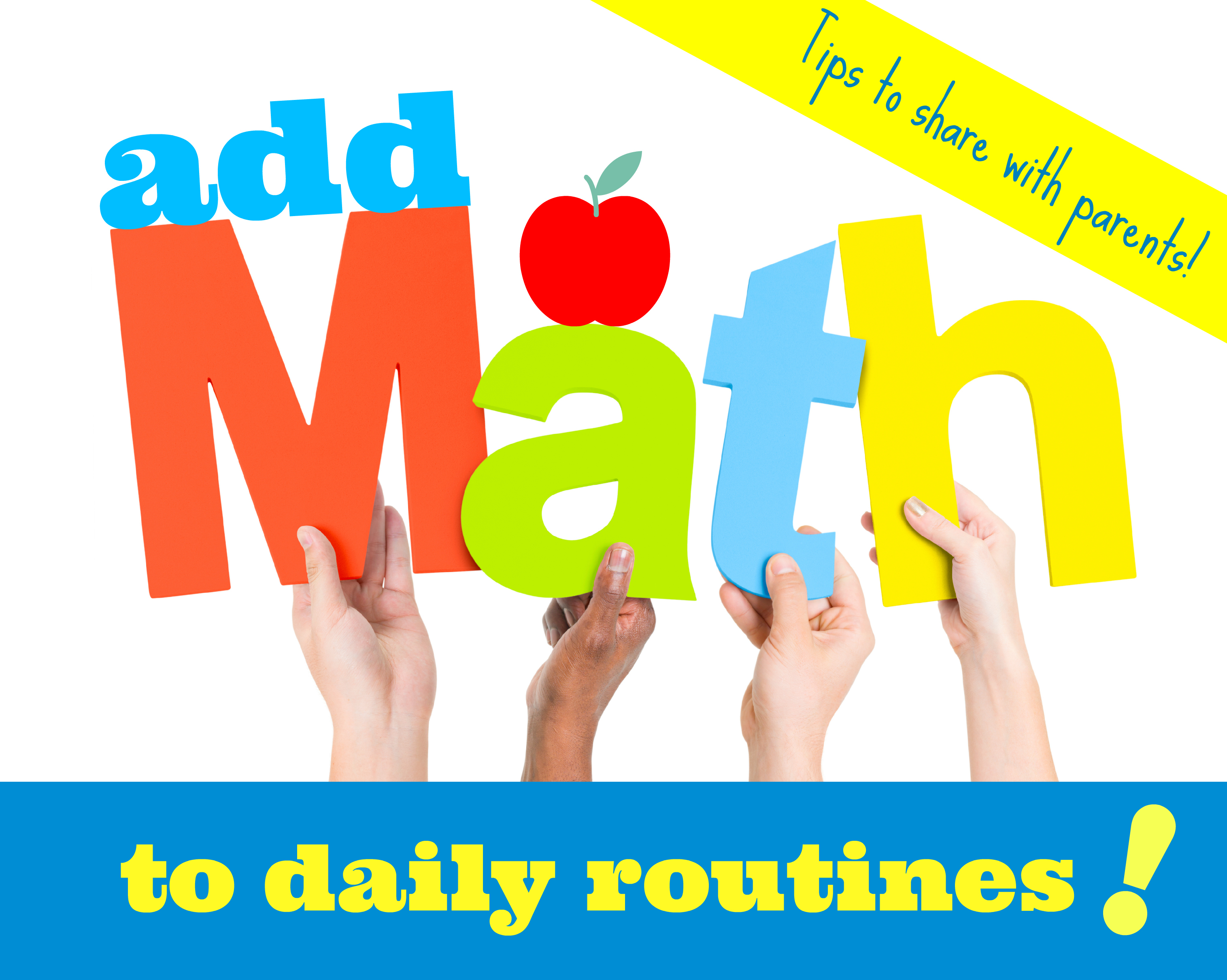
(PreK educators and parents of young kids: this post is for you!)
It’s no secret that today’s kindergarten kids are learning math concepts that used to be taught in first grade. If you’re a preK educator or parent getting children ready for their big transition to kindergarten, you’ve heard the message loud and clear:
To really get kids ready for long-term math success, teachers and families need to work together to weave math into everyday activities and connect math concepts to the real world. The good news is, even the most math-phobic parent can start doing that right now—for free!—with just a few small changes to their home routines.
What kind of changes? They can start by engaging in “purposeful play” and weaving math talk into everyday activities, like:
 Mealtime. Many kids look forward to mealtime and love to help out in the kitchen. Meals are the perfect time to get children counting, measuring, estimating, comparing, and recognizing shapes. Parents can have kids measure and count cups of ingredients, count how many plates and utensils are needed for the whole family, and figure out who has more or less mashed potatoes.
Mealtime. Many kids look forward to mealtime and love to help out in the kitchen. Meals are the perfect time to get children counting, measuring, estimating, comparing, and recognizing shapes. Parents can have kids measure and count cups of ingredients, count how many plates and utensils are needed for the whole family, and figure out who has more or less mashed potatoes.- Personal care & hygiene. Parents can easily turn dressing and grooming into an opportunity for math talk. During toothbrushing, a small egg timer can help a child develop a sense of elapsed time (and help them brush their teeth long enough!). When a child is getting dressed, parents can count out articles of clothing with their child and point out shapes like circles, triangles, squares, and rectangles in fabric prints, fasteners, and pockets. And during hand washing, parents can help the child count the squirts of soap and then count to 10 while they wash.
- Chores.
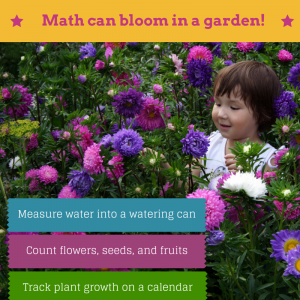 Getting kids involved in household tasks in early childhood is not only a good way to teach responsibility—it’s a great way to teach math skills! During cleanup time, parents can have the child name the shapes of the objects and count the number of steps she took to complete the cleanup task. Kids can learn math during laundry time by sorting clothes into piles of “more” or “less” and matching socks (a good way to help them understand sets of objects). And math can bloom in a garden—kids can measure water into a watering can, tally days on a calendar to keep track of plant growth, and count seeds, plants, flowers, fruits, and vegetables.
Getting kids involved in household tasks in early childhood is not only a good way to teach responsibility—it’s a great way to teach math skills! During cleanup time, parents can have the child name the shapes of the objects and count the number of steps she took to complete the cleanup task. Kids can learn math during laundry time by sorting clothes into piles of “more” or “less” and matching socks (a good way to help them understand sets of objects). And math can bloom in a garden—kids can measure water into a watering can, tally days on a calendar to keep track of plant growth, and count seeds, plants, flowers, fruits, and vegetables. - Bedtime routines. Each part of the bedtime routine is filled with opportunities to reinforce math concepts. For example, parents can choose bedtime books with math themes, prompt the child to count bubbles or bath toys while in the tub, and have the child count the number of events in his “goodnight routine.”
These ideas are all from Let’s Talk About Math by Donna Kotsopoulos and Joanne Lee. There are tons of other great tips in this book, so we’ve made a printable handout for parents (teachers, this would be a great thing to email parents now, or print out and share when your new year starts). It’s one more tool you can use to strengthen the home-school connection and make sure kids start kindergarten with the math basics they need to succeed.
YOUR TURN: Teachers—what’s your best suggestion for weaving math into everyday activities? And parents—how do you sneak little math lessons into your home routines? Share your knowledge below!
Pick up Let’s Talk About Math and learn more about using purposeful play with kids to promote mathematical thinking and get them ready for formal math instruction.

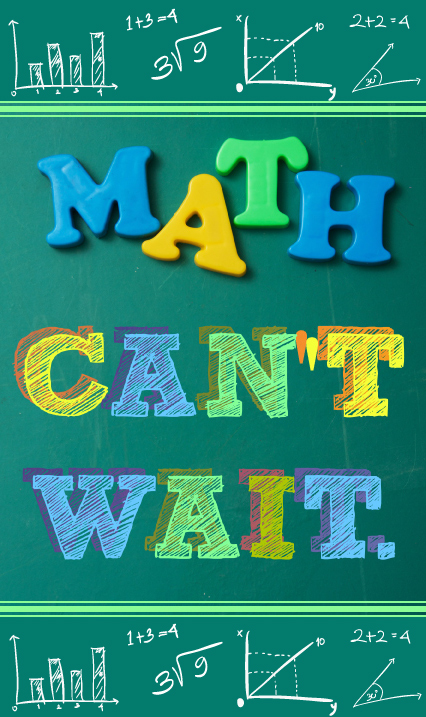
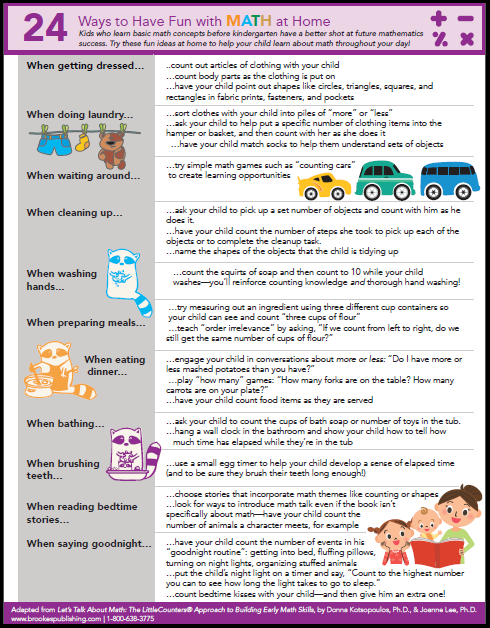
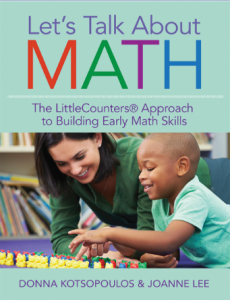


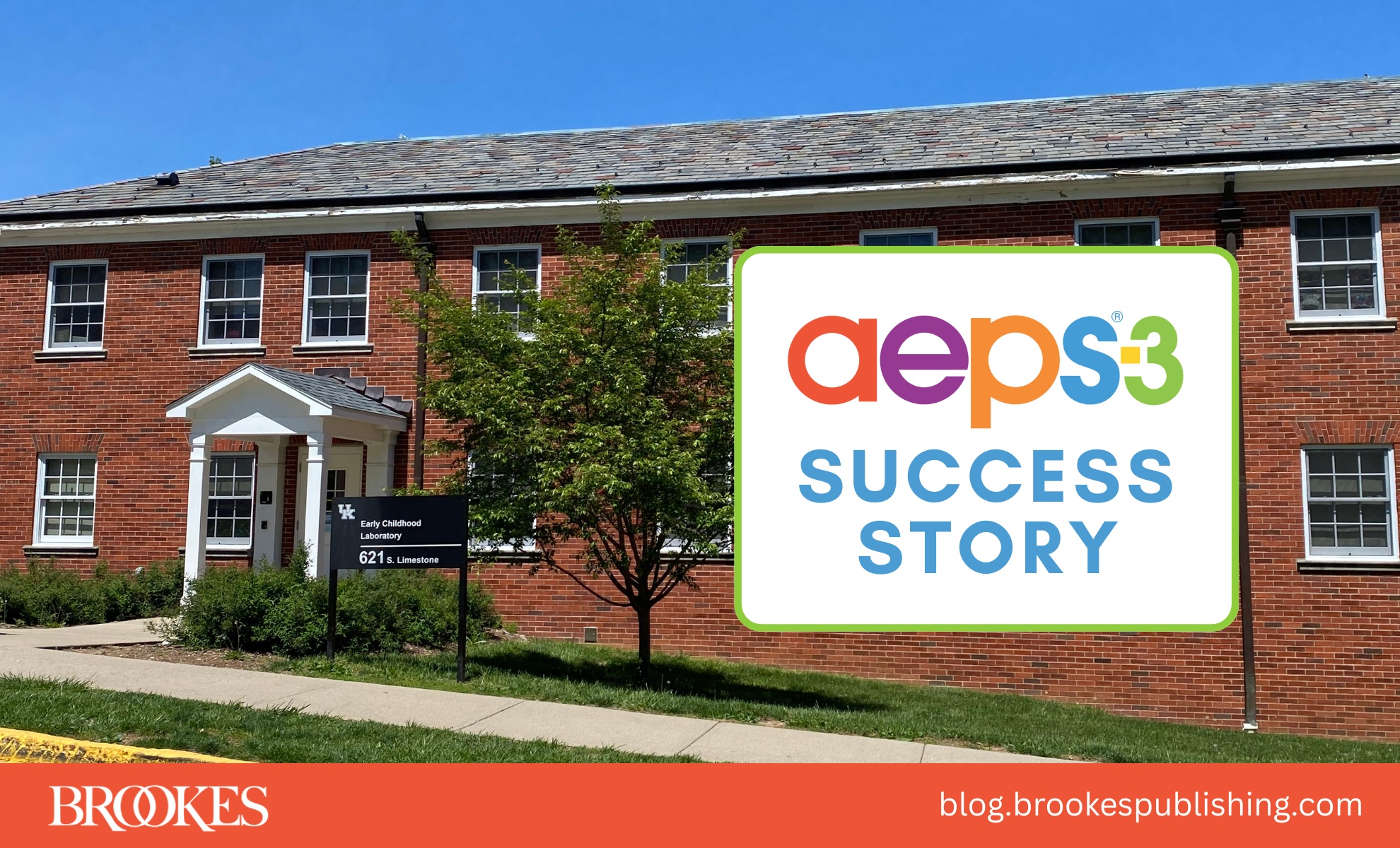
Write a Comment
Your email address will not be published. Required fields are marked *
comments
Debbie Eades says
whether in a classroom or outside you can virtually count everything and anything. It also helps when you use things that are of interest to the children
Post a Comment